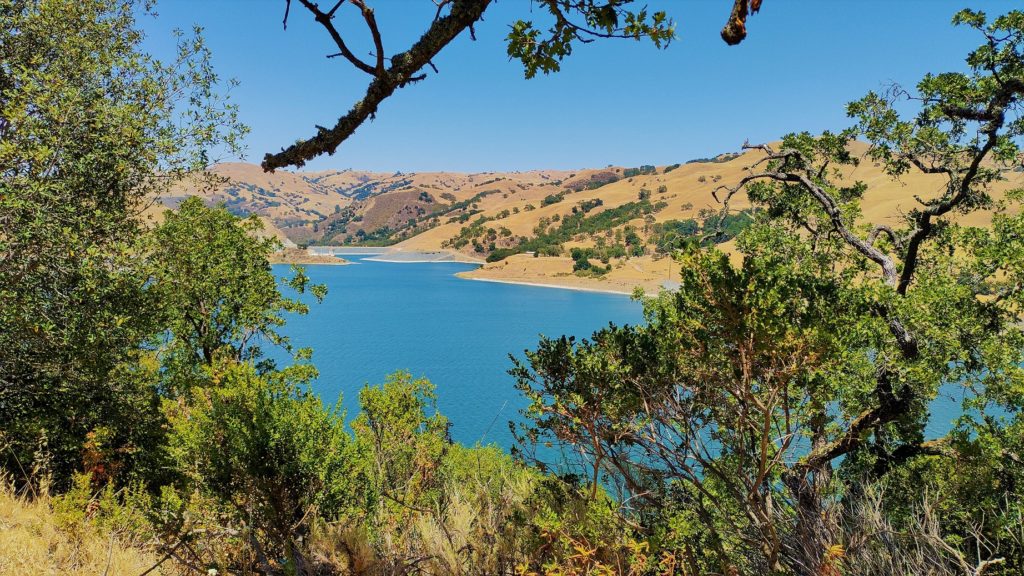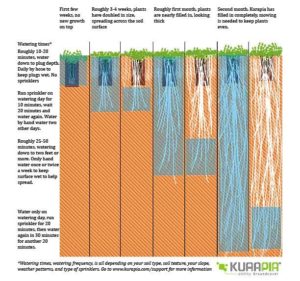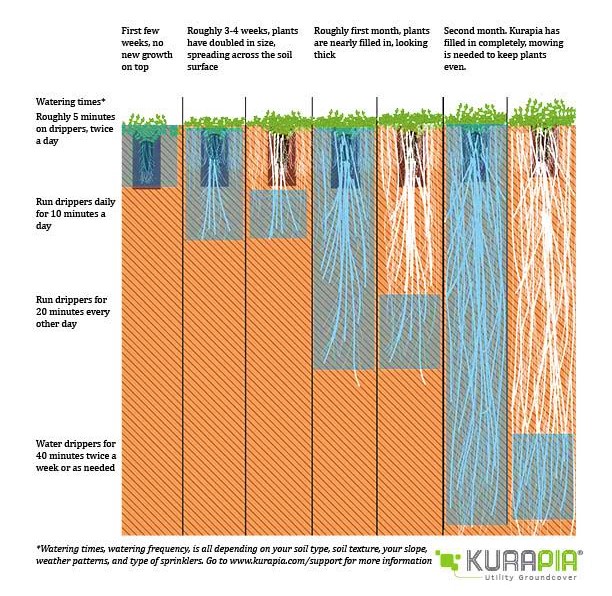
New Drought Water Restrictions Hit California
The Drought has come back to California and with it comes new regulations and water restrictions. What does this mean for your home, business or municipality? We have all the answers to your questions.
First of all, remember that Kurapia came from Japan to California directly as a result of the drought, as we knew Kurapia was perfect for the dry climate and frequent drought of California. As water regulations come out, rest assured, you can still order and install Kurapia successfully at your property!
First of all, the current watering restriction from the Metropolitan Water District is for the following areas and water districts. Check and see if these apply to you. Realize that multiple water districts serve various cities so be sure to check your water bill to see who is yours.
- Calleguas Municipal Water District (Ventura County, including Camarillo, Simi Valley, areas of Oak Park, Camrosa, Port Heuneme, Thousand Oaks, and Oxnard)
- Inland Empire Utilities Agency (Chino, Upland, Chino Hills, Montclair, Fontana, Ontario, and Rancho Cucamonga)
- Las Virgenes Municipal Water District (Agoura Hills, Calabasas, Hidden Hills, Westlake Village, and some areas in West LA)
- Los Angeles Department of Water and Power (Los Angeles, Bishop, Culver City, South Pasadena, West Hollywood)
- Three Valleys Municipal Water District (Claremont, San Dimas, Covina, Glendora, La Verne, Pomona, West Covina)
- Upper San Gabriel Valley Municipal Water District (Arcadia, Azusa, Baldwin Park, Bradbury, City of Industry, Covina, Duarte, El Monte, Glendora, Irwindale, La Puente, Monrovia, Rosemead, San Gabriel, South El Monte, South Pasadena, Temple City, and West Covina)
Keep in mind that Kurapia has been working with the Metropolitan Water District to make sure you are informed, and able to take full advantage of transitioning your yard to maximum water efficiency, which includes the installation and care of Kurapia. For the latest developments with the MWD, check their website here:
Kurapia has been approved and recommended for a drought tolerant alternative for lawns and groundcovers. We continue to work together to make sure that everyone is full compliance with their directive during this time. Our UC tested plant can do great working around these drought conditions, providing a high-performance groundcover.
Please note that each district is allowed to offer their own rules so please check with them.
1. What Are California’s New Water Restrictions?
The water rationing means they can only water one single day every week. They are not allowed to water any other day of the week using sprinklers. So for that day, you should use the most water efficient sprinklers you can get. The one we suggest is the Hunter MP Rotors. These special heads spray up to 30 feet, can be used to replace other pop-up sprinklers, and helps ensure you water deep into the soil, which is where Kurapia roots grow.
Can I Use Drip Irrigation During The Water Restriction?
Yes! People are allowed to water other days of the week if they are using drip emitters. Please note, this is drip emitters or inline drip emitters, this is NOT mushroom bubblers, misters, foggers, soakers, etc. In order for these to be successful, you will need to use either individual drip emitters or use inline dripper systems. We have talked about this type of emitter at length in our support guide, but we suggest you plan for each emitter to be set next to every spot you plan you put a plug. We find the Toro Blue Line has a wonderful 12” spaced inline dripper that works wonderfully with planted. Be sure you order plugs for every 12 inches and space the emitters 12” a part. For superior longevity and reliability, Netafim is the leader and we find their support for customers to be excellent. Be sure to use our calculator to be sure you know how many plugs we recommend. Remember these drip lines are made to be buried in the soil so be sure the emitter is dripping right into the plug root mass, so if there’s an elevation, place the emitter above the plug space.
Can I use a Greywater System?
Yes. People are allowed to use greywater systems. Greywater systems must be carefully monitored to ensure do not place anything chemicals into system are not plant safe. Be sure to look for “Greywater Safe” on the label of any soap, shampoo, or detergent in your graywater system. Be sure still have monitor your plants to ensure there’s no damage to the plants. If you see signs of damage (like rapid leaf drop), consider one watering a week with tap water to flush out any salts that are building up in the soil. Be sure to check out our friends at the Greywater Corps website and use their amazing resources and people to find the best solutions for graywater systems.
Am I Allowed To Water By Hand?
Yes! People are allowed to water by hand during the establishment phase. Please note this basically watering by hand with a hose. This does not mean attaching a hose end sprinkler in the yard or flooding the yard a few time a week. Be sure you use a good water breaker and a hand valve to ensure you don’t use too much. I’ve found the Dramm Water Wand with the Bronze valve is going to save you a lot of time. The water breaker nozzle ensures you get less run off and get more saturation. Using the bronze valve helps you turn the flow of water on and off quickly so you don’t water too much in the wrong place. The long reach of the wand ensure you get around tricky areas as well. A good watering technique is to water the plants in short waves. Water just long enough to get the soil wet in each section, then circle back and water again. This gives the soil time to absorb the water and prevent runoff.
Can You Use Reclaimed Water?
Yes! Installations may be watered by reclaimed water (the sprinklers with the purple cap). Reclaimed water is wonderful for Kurapia, since Kurapia has great saltwater tolerance. If you’re using 100% reclaimed water, consider three times a year treating your soil with a soil acidifier such as aluminum sulfate, which will help bind the salts and keep your plants happy.
2. What Does This Mean For Kurapia Installations?
As always, we will be working with our plant growers, suppliers, and distributors to ensure you get the best quality product, have the best success rate, and save money while growing a beautiful yard. A few things to think about during the installation phase during a drought.
As we recommend in our support guide, you want those plugs to be able to grow new roots as soon as possible, so digging a deep hole for the roots to grow into is highly suggested. Using a 2 ½ or 3 inch bulb auger bit is going to help make this much easier, especially with heavy soils with clay. The deeper the roots, the faster you’ll be able to water only once a week and more money you will save on watering.
Increase Mulching
For watering once a week at the start, mulching is very important. It’s highly advisable that you get one inch of fine mulch placed over the plugs, and use more if you have lightly colored soil.. Be sure this mulch is well rotted and doesn’t smell like sawdust, doesn’t smell like manure, and is rich and dark in color. We really like Kellogg’s Topper as a mulch, as well as their Growmulch. We will be testing mulches from other companies and we will update this as we research further. We do not recommend Gorilla Hair mulch as it is flammable.
Organic Fertilizers Only
We do NOT recommend using most fertilizers as the plants are filling in. Most fertilizers will inhibit Kurapia’s drought tolerance. Use organic fertilizers (we love Grow More’s Sea Grow 15-15-15 at half strength) as they release only a little into the soil at once. You can also use Osmocote (also half strength) as they release only when the soil is wet. As always, never feed plants when they are dry.
Keep Up With Your Mowing
Mow your Kurapia at least once a month. Keeping the Kurapia low to the ground decreases the amount of water it needs. Increase to twice a month if the plants are growing really fast, as the mowing will also keep the Kurapia low and cushiony.
During this time, Kurapia along with the Metropolitan Water District and the State of California want to make sure we all get through this drought while still enjoy healthy, lush, barefoot walkable lawns. Kurapia will remain the industry leader in this regard as we continue to ensure that we have happy customers, small water bills, and a less parched state.
3. Watering Recommendations For New Installations of Kurapia
Hand/Sprinkler Watering and Drip Irrigation
Thank You For Reading!



